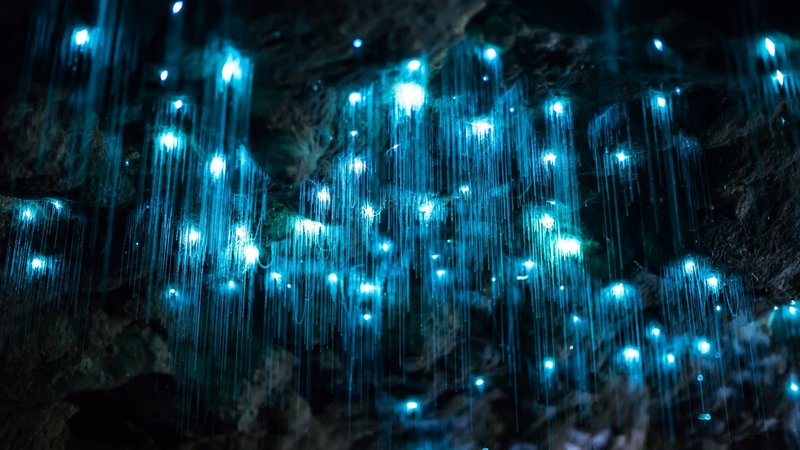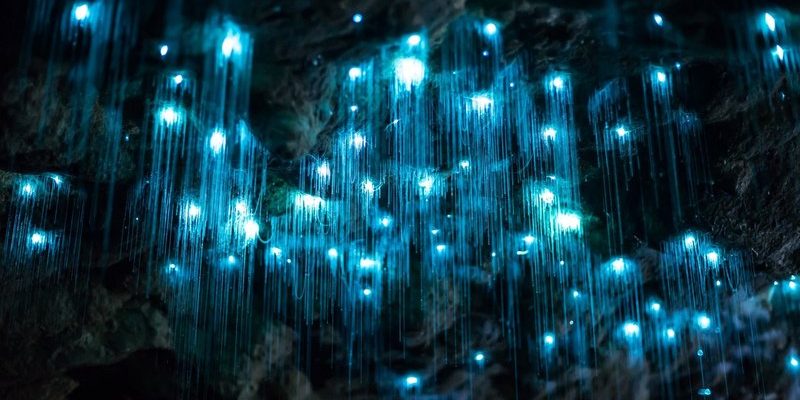
The relationship between glow worms and leaf litter is a wonderful example of how ecosystems work together in harmony. Leaf litter isn’t just a pile of dried leaves—it’s a thriving microcosm that supports a variety of life, including these enchanting glow-in-the-dark insects. So, let’s dive into this intriguing partnership and uncover the secrets of their habitat connection!
What Are Glow Worms?
Glow worms aren’t actually worms but the larval stage of beetles from the family Lampyridae. Their luminescence comes from a chemical reaction in their bodies, which they use to attract prey. Imagine being able to produce your own light in the dark—that’s what these little critters do! When night falls, they use their glowing ability to entice small insects like moths to their sticky silk threads.
Typically found in moist environments, they thrive in cool, dark areas, often hanging out in caves or forests. Their bright glow is not just for show; it’s a survival tactic. By attracting prey, glow worms ensure they get the nutrients they need to grow. But here’s the twist: they depend heavily on their surroundings, especially leaf litter, to flourish.
Leaf Litter: The Unsung Hero
Leaf litter consists of fallen leaves, twigs, and other organic matter that naturally accumulates on the forest floor. It’s often overlooked, but this layer serves several critical functions in the ecosystem. First, it acts as a buffet for many organisms, providing nutrients and habitats. If you think about it, leaf litter is like a grocery store for various creatures, including glow worms.
Moreover, leaf litter helps retain moisture in the soil, creating a humid environment that is vital for glow worms. Without this moisture, they wouldn’t thrive. Think of it as a cozy blanket for the soil; it keeps everything warm and comfy!
Leaf litter also plays a role in the decomposition process, where microorganisms break down organic material, enriching the soil. This nutrient-rich soil supports plant growth, which in turn creates more leaf litter. It’s a cycle that benefits the whole ecosystem!
The Connection Between Glow Worms and Leaf Litter
The bond between glow worms and leaf litter is a perfect illustration of the interconnectedness of nature. Glow worms use the leaf litter as part of their habitat, relying on it for moisture, food, and protection. When adult female glow worms lay their eggs, they often do so in or near leaf litter, ensuring that the larvae have immediate access to the resources they need once they hatch.
In a way, leaf litter acts like a safety net. The dense layer of leaves provides cover from predators and harsh weather, allowing glow worms to thrive in peace. Without this natural protection, their chances of survival would drastically decrease. It’s like having a safety hall pass in school—without it, you’re vulnerable to getting caught!
Moreover, as we’ve seen, the breakdown of leaf litter contributes nutrients to the soil, fostering a suitable environment for plants. These plants help maintain the ecosystem, providing shade and further shelter for glow worms while playing a crucial role in the food chain.
Why This Relationship Matters
Understanding the relationship between glow worms and leaf litter is essential for several reasons. First, these creatures are indicators of ecosystem health. If glow worms are thriving, it usually means the environment is in good condition. Changes in their population can signal shifts in the ecosystem that might require our attention.
Secondly, glow worms are linked to biodiversity. They contribute to the complex web of life in forests by providing food for other species. This connection highlights the importance of preserving habitats where glow worms and leaf litter coexist. Protecting these ecosystems ensures that many species, not just glow worms, continue to flourish.
Finally, this relationship showcases the importance of even the smallest elements in nature. Leaf litter, often dismissed as mere debris, plays a vital role in supporting life. Understanding its significance can cultivate a deeper appreciation for our environment and motivate us to protect it.
Conservation Efforts
Given the importance of glow worms and their leaf litter habitats, conservation efforts are crucial. Many areas are working to protect these ecosystems from human impact. For instance, habitat restoration projects focus on preserving leaf litter and improving soil health, which directly benefits glow worms.
Local communities can also play a role in these efforts. Simple practices like reducing waste, promoting sustainable gardening, and educating others about the ecological benefits of leaf litter can make a big difference. Remember, every individual has the power to contribute to preserving these enchanting creatures and their homes.
In addition, protecting forests from deforestation and pollution ensures that glow worms have a safe place to live. By advocating for sustainable practices and supporting conservation organizations, we can help maintain the delicate balance between glow worms and leaf litter.
The Future of Glow Worms and Leaf Litter
The future of glow worms and their connection to leaf litter is a topic of growing importance as climate change and urbanization pose threats to their habitats. As temperatures rise and weather patterns shift, the delicate balance of ecosystems can be disrupted.
If we don’t take action, we risk losing not only glow worms but also the rich biodiversity they support. It’s essential to stay informed about environmental changes and advocate for policies that protect natural habitats.
Moreover, increased awareness and education can inspire future generations to appreciate the beauty of glow worms and their role in the ecosystem. Just like a small spark can light up a room, understanding and sharing this knowledge can ignite a passion for conservation.
The relationship between glow worms and leaf litter is a captivating example of how nature works in harmony. These tiny creatures illuminate our world while relying on the often-overlooked leaf litter to thrive. By understanding and appreciating this connection, we can take steps to protect both glow worms and their habitats.
The next time you find yourself in a forest, remember that each leaf on the ground is part of a larger story—a story that includes glow worms, their glow, and the ecosystem they help sustain. Together, we can ensure that this magical relationship continues for generations to come.

